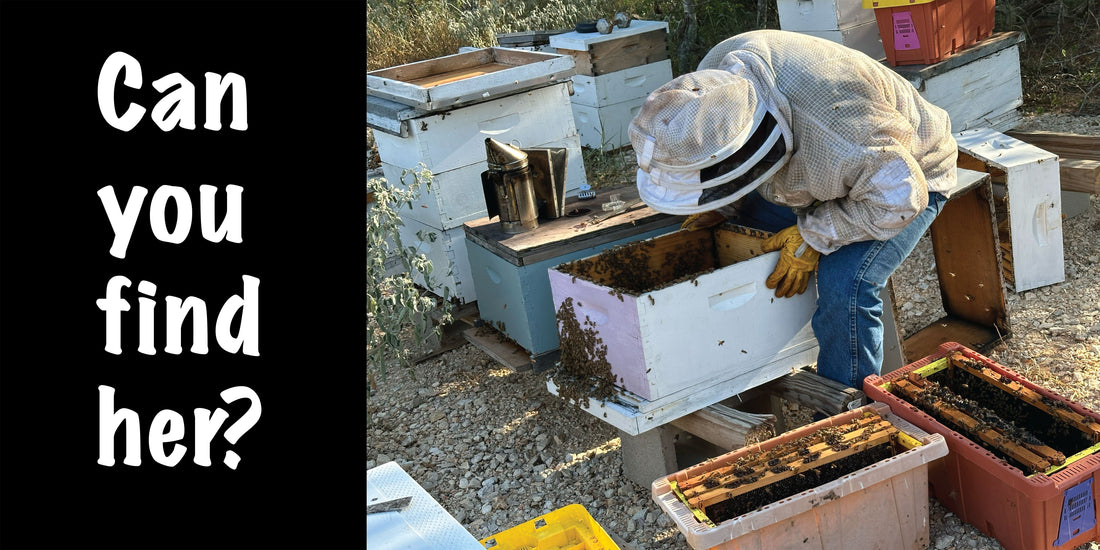Sometimes the best way to strengthen a weak colony is to borrow from a strong one. Equalizing hives is a practical, hands-on skill that keeps your apiary healthy and productive — and it’s a lot less complicated than it sounds.
The Big Idea:
Strong colonies can spare resources — brood, bees, or stores — that weaker colonies desperately need. Done right, equalizing can:
- Prevent a strong colony from swarming.
- Save a struggling colony from collapse.
- Even serve as a diagnostic tool.
Open Brood Test for Queenlessness:
If you suspect a colony is queenless, give them a frame of open brood with eggs and larvae from a healthy hive.
- If they start building queen cells → you’ve confirmed queenlessness.
- In Texas, I don’t let them raise their own — odds are they’ll produce a hybrid Scutellata queen, which means more “spicy” bees.
- Instead, I’ll introduce a mated queen from a known, gentle stock.
Capped Brood Boost:
Giving a struggling hive a frame of capped brood from a strong colony means fresh bees will emerge in days. This can instantly increase the number of nurses and foragers, helping the colony recover.
Splitting Considerations:
If you have a fat or aggressive colony in late summer, you may choose to split it before the fall flow. This reduces congestion and aggression while increasing your total hive count.
Always balance the needs of both hives. You want to strengthen the weak without weakening the strong to the point of vulnerability.
Equalizing is beekeeping’s version of community care — a little generosity from one hive can save another. Try it before the fall flow and you might just set your apiary up for its best season yet.

